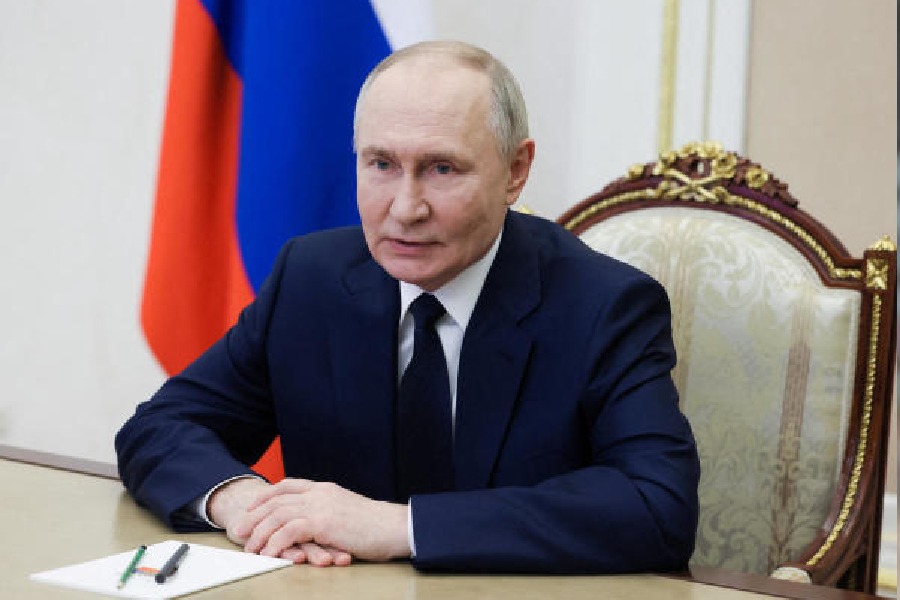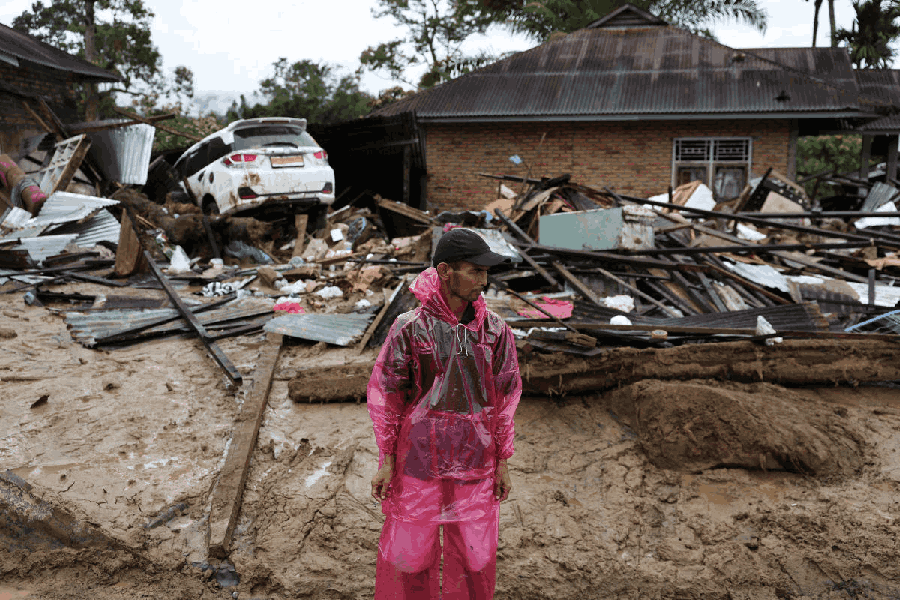 |
 |
| The Ma Bhadrakali temple at Itkhori, Chatra, and (below) the idol on Monday. Pictures by Vishvendu Jaipuriar |
Hazaribagh, Jan. 2: The temple village of Itkhori in Chatra district, 63km from Hazaribagh, is buzzing with excitement. In a day or two, chosen sites on its famed Ma Bhadrakali temple premises will be dug up for the first time by a team from the Archaeological Survey of India (ASI).
The temple, dating circa 7th century AD, is unique as it is a confluence of three religions —Hinduism, Buddhism and Jainism.
Besides Bhadrakali, seen as a propitious form of Kali, Shiva and Hanuman idols complete the Hindu influence. Besides these, there is a stupa with 1,008 figurines of Buddha and the charan paduka (slippers) of Jain Tirthankar Sheetalnath. All are made of black stone, with similar aesthetic styles, suggesting religious co-existence in close proximity in the Middle Ages.
“This place must have been the Patliputra of Jharkhand. The temple was built between 7th and 10th centuries, AD,” said Vinoba Bhave University history professor Iftikhar Alam.
But a seal by archaeologists will confirm what historians and even Itkhori villagers know. More importantly, it will put the village on the global tourist map.
Archaeological Society of India superintending archaeologist (Ranchi circle) N.G. Nikoshey and his team — Brajesh Kumar, K.K. Jha and Jai Shankar — have already identified two excavation sites.
Well-known Buddhist priest Bhante Tisswaro had written to the Prime Minister’s Office, requesting such an excavation. “This initiative will unearth new facts about the temple and area,” he said.
Tulsi Giri, a Hindu priest who looks after the Buddhist stupa, said he was happy that ASI would finally start its excavation work. “This is a very important national heritage, a temple with evidence of three religions. The place witnesses a daily footfall of around 2,000, mostly Hindu pilgrims. I hope it becomes famous and Buddhists and Jains also visit in large numbers,” he said.
He added that the state government had, in 2007, pumped in Rs 4 crore to beautify the temple. “Premises were inlaid with marble. We got a beautiful entrance gate. But we are excited about the excavation as it will authenticate the historical value,” he added.
Since many years, foraging villagers had found ancient structures or idols in the area. The administration was left with no other option but to keep the recovered relics in a room in front of the temple locally known as the “museum”.
Another priest, Kameshwar Giri, said many teams had come for surveys. “This excavation will bring this place on the religious map of the country as people of three faiths — Hinduism, Budhhism and Jainism — will converge here,” he said, adding he felt a momentous event was in the offing.
Interestingly, in 2007, the ASI had feared damage to the structure and forbidden exploration or excavation work until further instruction.











